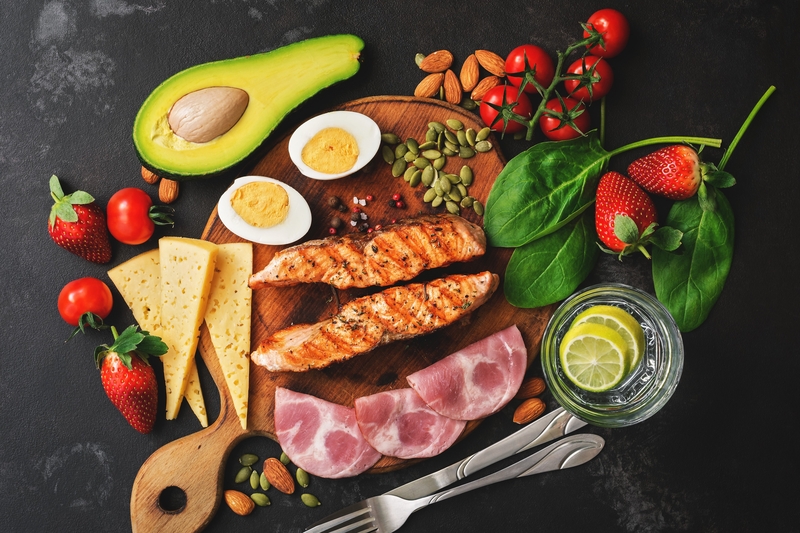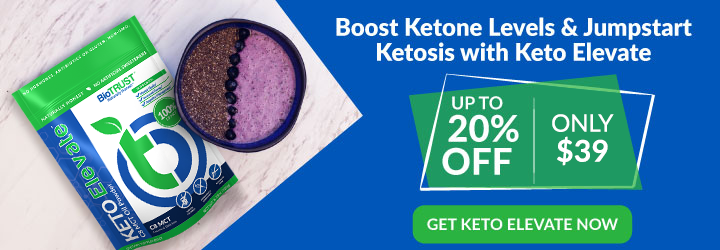The Atkins Diet: Pros, Cons, and Does It Work?

The Atkins Diet first really hit the scene when the book Dr. Atkins Diet Revolution, written by Dr. Robert Atkins, hit shelves in 1972. At the time, low-fat diets were all the rage. Dr. Atkins, a cardiologist, went against the grain and instead began promoting this low-carb (and higher-fat) diet to the masses. Before the ketogenic diet, the Atkins Diet was likely the most well-recognized low-carb diet.
Starting in the 1960s, Dr. Atkins developed the plan as an alternative to using drugs like amphetamines to suppress appetite and lose weight. He tried the diet himself and also talked some colleagues into giving it a try, and they all experienced weight-loss success.
He claimed that carbohydrates were the bigger issue, not fat—that excess carbohydrates were leading not only to weight gain but health problems, including heart issues. The result was a diet that provided plenty of fatty foods, some protein, but limited carbohydrates.
After years of being told to avoid fat, Dr. Atkins changed what it meant to diet. After all, with food options like a veggie omelet with cheese for breakfast, a juicy hamburger (no bun) with a green salad for lunch, and a steak with sautéed vegetables (in butter) for dinner, what dieter wouldn’t be intrigued? Especially those who had been trying to live off lettuce and rice cakes!
In today’s article about The Atkins Diet, we will cover:
- What is the Atkins Diet?
- Atkins and Metabolism
- Benefits of Atkins Diet
- Downsides of Atkins Diet
- The Atkins Diet: Is it Right for You?
What is the Atkins Diet?
There are four phases of the Atkins Diet, starting with very few carbs and gradually allowing the consumption of more until the desired weight is achieved and then maintained. In the first phase, a mere 20 – 25 grams per day of net carbs are allowed. (Net carbs are calculated by taking total carbohydrates in grams and subtracting fiber, sugar alcohols, and glycerin.) Carb choices are mostly limited to “foundation vegetables,” which are all high in fiber. But you have dozens of choices from arugula to avocado to eggplant to button mushrooms to zucchini. It is recommended that at least 12 – 15 grams of your carbs should be in the form of salad greens or other vegetables on the list.
This phase, however, is only for folks who want to lose over 40 pounds, have a waist circumference of more than 35 inches for women and 40 inches for men, or are pre-diabetic or diabetic. Along with limiting carbs, there are other rules to follow, such as:
- Avoid skipping meals—eat either 3 regular meals or 4 to 5 smaller meals per day, and don’t go more than 6 waking hours without food.
- Eat protein at every meal—at least three 4- to 6-ounce servings a day from poultry, fish, shellfish, eggs, or red meat.
- Remember that fat is your friend—fat flavors foods, allows you to absorb vitamins, and keeps you full. Consume three tablespoons of pure fat from butter, mayo, olive oil, or other cold-press oils per day.
- Only eat foods from the “acceptable foods” list—avoid anything else. So, no fruit, bread, pasta, grains, starchy veggies, or even nuts or seeds during the first two weeks. Even beans and legumes are not included on the menu during this two-week induction phase.
- Listen to your appetite—eat enough to feel satisfied without stuffing yourself. And watch as your appetite decreases. If you aren’t hungry at meal times, you can have a small low-carb snack instead.
- Watch for hidden carbs—just because zero carbs are listed on the label doesn’t mean it’s carb free. Watch for serving sizes as foods with less than .5 g of carbs are typically listed as 0, yet when you review the ingredients, you’ll find carbohydrates like flour or corn starch.
- Use sugar substitutes like stevia only in moderation.
- Drink lots of water—this helps avoid constipation and electrolyte imbalances as well as flushes out toxins. Shoot for at least eight 8-ounce glasses of water. You can also drink coffee, tea, or broth to replace two servings of water.
- While you don’t have to give up coffee or tea altogether, keep it to a minimum—caffeine can affect blood sugar levels and lead to sugar cravings.
- Finally, a multivitamin is also recommended as is a daily omega-3 fatty acid supplement—this provides insurance that you are getting the nutrients your body needs.
After the initial phase, you graduate to phase 2, which allows 30 grams of net carbs. Then phase 3, you increase net carbs by 10 grams per week, and fine-tune the diet until you reach your target weight. Finally, you’ll hit phase 4, or the maintenance phase, where you can eat up to 100 grams of net carbs as long as you don’t push past your goal weight (i.e., regain the weight you lost). During each phase, you can also increase food variety by adding some low-carb berries, melons, nuts, and other fiber-rich carbs.
The Atkins Diet has, however, evolved over the years, and there are other optional plans for people who have less weight to lose. For example, Atkins 40 limits net carbs to 40 grams per day and is “perfect for those who have less than 40 pounds to lose.” As you lose weight, you can increase carbohydrates by 10 net carb increments until you are able to maintain your healthy weight.
There is also Atkins 100, which limits net carbs to 100 grams per day, and is suggested for maintaining your current weight. Both of these plans allow more flexibility and the ability to eat any of the acceptable foods instead of the limited foods allowed in phase 1 of the original plan.
Atkins and Metabolism
The main goal of the Atkins Diet is to change metabolism from burning carbohydrates to using stored body fat for fuel instead. For comparison, the 2020 – 2025 Dietary Guidelines for Americans suggest that adults consuming 2,000 calories per day eat 130 grams of carbohydrates per day. The Atkins Diet also recommends significantly more fat and slightly more protein than USDA recommendations.
When limiting carbs, the body turns to other fuel sources—primarily stored body fat, at least according to the theory. Even once you’re free to eat more carbs per day, you’ll want to avoid consuming a carb-heavy meal as this can flood the blood with glucose, leading the body to shuttle the excess to the liver as glycogen. The next stop after the liver is stored as fat.
RELATED: How to Get Keto Results WITHOUT the Keto Diet
Benefits of Atkins Diet
Low-carb diets like the Atkins Diet provide less carbohydrates than are recommended by many experts, dietitians, and organizations. There are also strict limits on some favorite foods like breads, pastas, and even fruits. Because the diet focuses on fat consumption, there are also health concerns for some individuals.
However, research on low-carb diets has, perhaps surprisingly, shown that they may lead to greater weight loss and improvements in not just blood sugar but HDL cholesterol and triglycerides than low-fat diets.
Atkins reports that an average person can lose up to two pounds per week. While people often experience even more weight loss in the first few weeks, much of that is due to water, as the body no longer needs to hold onto fluids for stored carbohydrates.
Another plus, of course, is that many foods that were limited in the past—like butter, cheese, cream, or juicy steaks—are now allowed guilt-free. There’s also more research on the Atkins Diet than many other diets, and it has been shown to be successful for many dieters, especially in the short-term.
For example, a review of 17 different low-carb plans like the Atkins Diet found an average of ~18 pounds of weight lost (along with decreased waist circumference) when the diets lasted six months to a year.
One of the biggest benefits of low-carb diets like the Atkins Diet is the decrease in hunger as both protein and fat can reduce appetite. In addition, because you’re cutting out so many foods like breads and pastas and other packaged goods, you may find it easier to avoid ultra-processed foods. This can help you cut back on unhealthy additives as well as unnecessary calories and sugars.
In the U.S. News Diet Rankings, the Atkins Diet ranks as #2 for the best rapid weight-loss diet. Unfortunately, its total ranking drops to #33 as it’s difficult for many to follow and because its health benefits have been questioned by nutritionists, especially when it comes to heart health and diabetes. Because the diet relies heavily on fresh meats and vegetables, you may also see your grocery bill go up, as these foods are often more costly.
Again, many nutritionists have suggested that the rapid weight loss is likely due more to losing water weight as the diet has a diuretic effect. It takes longer to lose weight in the form of fat. One of the biggest drawbacks is that people tend to fall off diets that limit entire food groups more than less-restrictive diets. And the Atkins Diet can be very restrictive. One study, for example, found that slightly more Atkins dieters give up after 3, 6, 12, and 24 months than dieters who followed a low-carb diet.
Downsides of Atkins Diet
While it’s easy to find Atkins-approved recipes from a range of cuisines, both building a menu and eating out may take more effort than many dieters are used to. Plus, alcohol is limited. So, before beginning the diet, it’s a good idea to review the foods allowed and determine if this diet is too restrictive for you. And if you do decide to give it a go, make sure you plan in advance and stock your fridge with foods you can eat.
With the Atkins Diet, you won’t need to count calories or measure out portion sizes, but you will need to get good at meticulously counting carbohydrates and figuring out net carbs, especially when you first start the diet and are in the first and second phases.
Atkins also has a frozen-food line as well as convenience foods available, including snack bars and baking mixes. Keep in mind, however, that many of these foods are considered ultra-processed and may not be as healthy as you would like. For instance, many contain artificial sweeteners, processed ingredients, and are high in saturated fat and sodium. So, they likely aren’t recommended for daily use but rather when you’re in a pinch and don’t have a lot of time.
There are also a number of less-than-healthy processed foods on the acceptable list as well. While bacon and American cheese may be fine to eat from time to time, regularly consuming processed meats and dairy could increase the risk of heart disease and even cancer. Indeed, the Atkins Diet does recommend limiting processed meats and eating no more than four ounces of cheese per day.
Yet foods with well-known health benefits, such as some more carb-heavy fruits and vegetables are completely off the menu. These are foods that provide an abundance of vitamins, minerals, fiber, and phytochemicals, and forgoing them for the long haul could lead to nutrient deficiencies.
Exercise is recommended, but not required, to lose weight with the Atkins Diet. When you begin the diet, if you haven’t been exercising, they recommend waiting a couple of weeks as you adapt to the dietary changes. If exercise has been a part of your lifestyle, they recommend scaling back for a couple of weeks as you will likely find your energy decreased as your body gets used to the new eating plan.
Finally, because the Atkins Diet has been around for such a long time and has such a large company behind it, it does provide many resources that aren’t available with many newer diets. For example, you can easily find meal planners, carb counters, and goal-setting tools.
The Atkins Diet: Is it Right for You?
There is no denying that low-carb diets can be effective for weight loss and improved health for many people. And that’s true for the Atkins Diet. That doesn’t, however, mean it’s right for everyone. The diet is highly restrictive (even from some highly nutritious foods like beans, legumes, some vegetables, and fruits).
Common side effects of the Atkins Diet include constipation, electrolyte imbalances, nutrient deficiencies, low blood sugar levels, and decreased energy levels. It can be especially difficult for those who are currently consuming a standard American diet, as suddenly cutting carbs can also lead to headaches, nausea, fatigue, bad breath, and mood swings.
If you do decide to give the Atkins Diet a go to lose weight, better control blood glucose, reduce blood pressure, or enjoy other health benefits, strive to eat mostly whole foods. That is, limit or avoid processed meats, cheeses, and other foods. Then ensure your diet is rich in healthy fats as found in fatty fish, avocados, nuts, and cold-pressed olive oils. And as you do increase carbohydrates in later phases, include healthy, fiber-rich carbohydrates including fresh fruits, a colorful variety of vegetables, and even some beans, legumes, and fiber-packed whole grains to better support overall health.
As always, before beginning any new diet, it’s best to consult with your healthcare practitioner, especially if you are taking any medications, to help you find the best diet for you.






 7 Signs Your Body is Seriously Low on Collagen (not just wrinkles)
7 Signs Your Body is Seriously Low on Collagen (not just wrinkles) Health Expert: "Turmeric Doesn't Work (unless...)"
Health Expert: "Turmeric Doesn't Work (unless...)" 3 Warning Signs Your Probiotic Supplement is a Total Waste
3 Warning Signs Your Probiotic Supplement is a Total Waste

